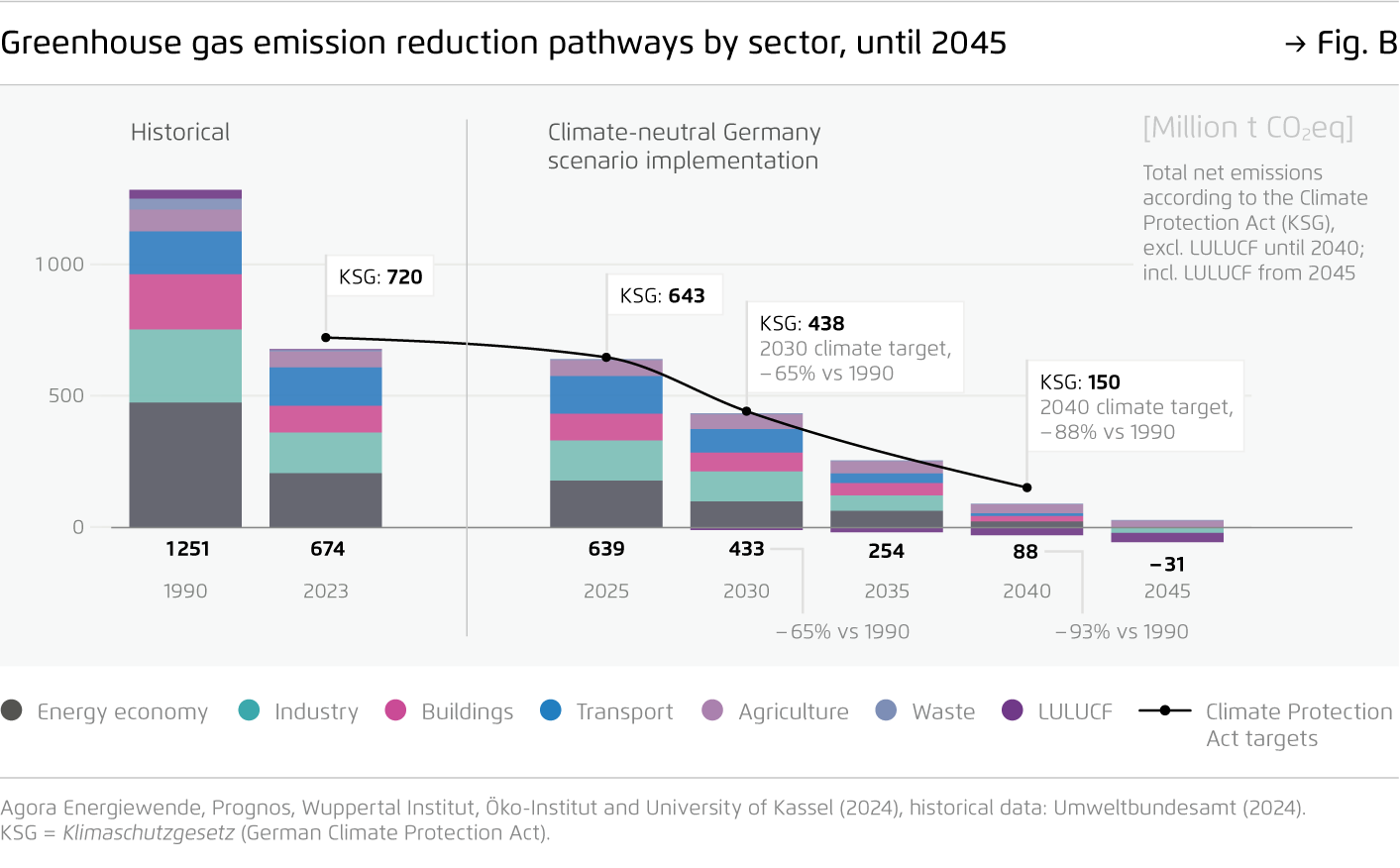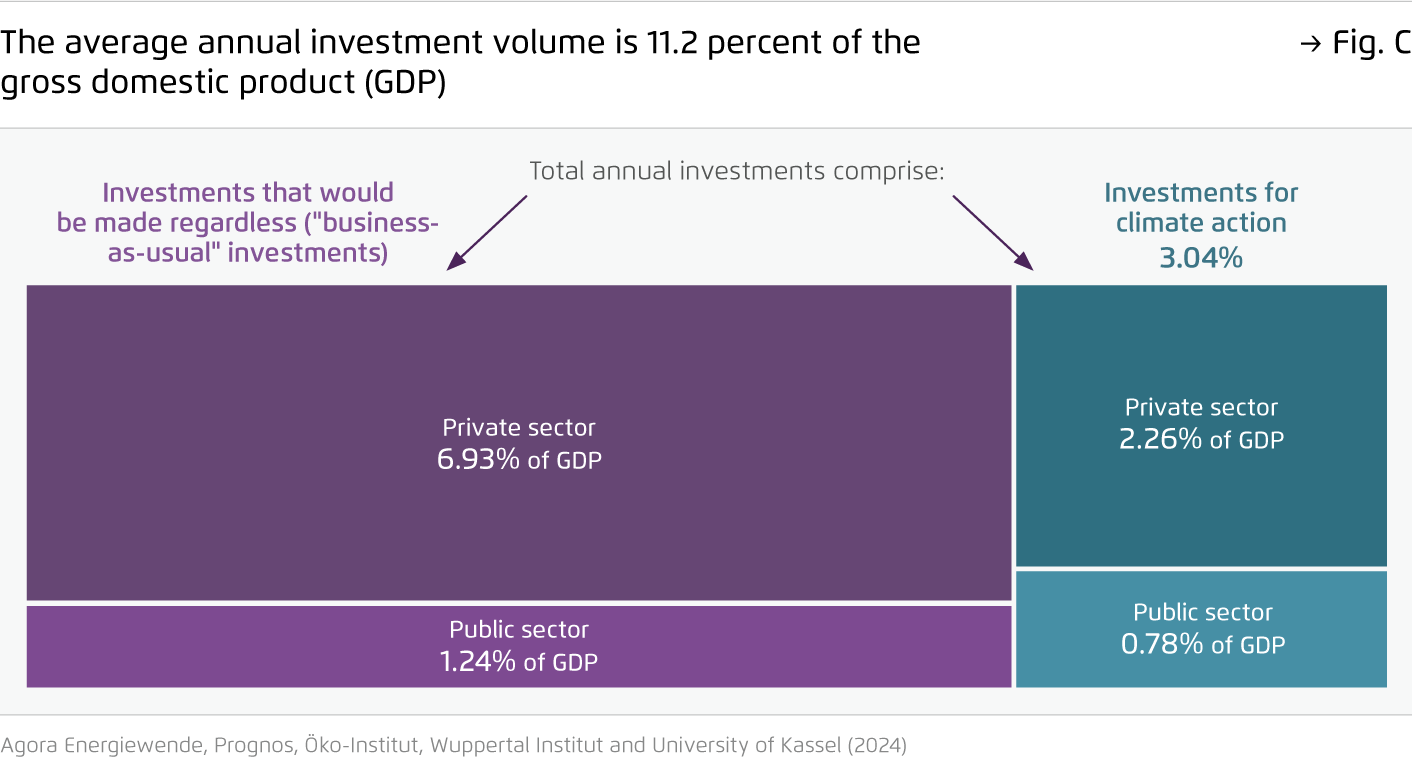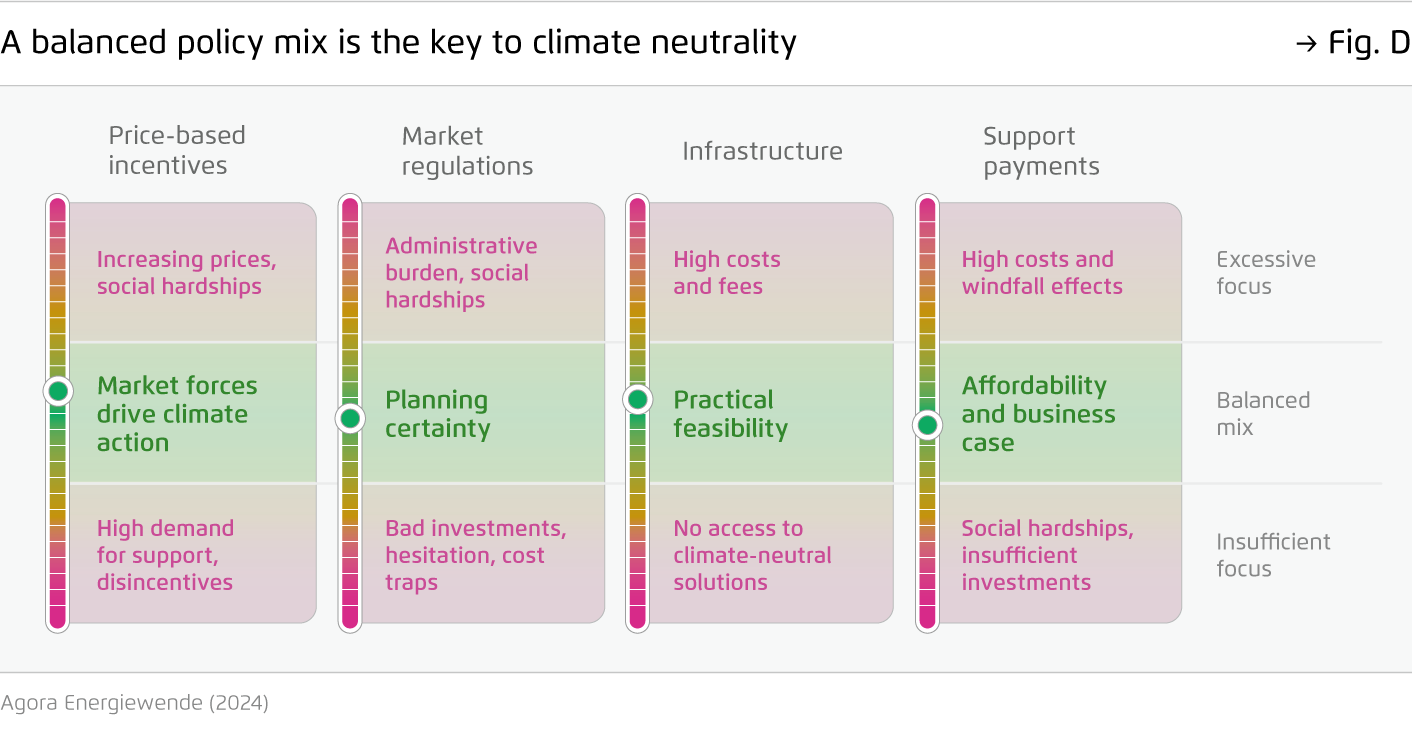-
The path to a climate-neutral Germany requires planning and investment certainty.
Climate policy is having an impact – emissions in the energy sector have fallen by around 40 percent since 2014. However, the transition in the transport sector, the climate-neutral modernisation of buildings and the necessary changes in the industry sector still pose challenges. To overcome these challenges effectively, reliable climate and economic policy frameworks are crucial.
-
Climate investments boost innovation and improve structural competitiveness.
Three quarters of the investments in energy and transport infrastructure, industrial facilities and buildings required by 2045 are necessary regardless of the transition. Redirecting financial flows towards climate-neutral solutions through price incentives and market regulation is therefore crucial. Additional investments specifically for climate action account for about three percent of GDP, many of which are economically viable – renewables and electricity grids, for example, are 90 percent financed by market revenues and fees.
-
Achieving climate-friendly housing and mobility for everyone requires extensive infrastructure expansion, targeted investment support and measures to correct social imbalances.
The scenario includes more targeted support for building retrofits, purchase incentives for electric vehicles that focus on small and used cars and the expansion of public transport infrastructure. These longer-term measures are bolstered by a temporary support mechanism, with ten billion euros per year from carbon pricing revenues allocated for compensation payments.
-
A balanced policy mix ensures successful implementation.
Relying solely on carbon pricing, market regulation, subsidies or infrastructure expansion has its disadvantages. By contrast, a combined approach allows for cost efficiency, planning certainty and social equity. Regardless of the exact composition of the policy mix, the path to climate neutrality requires a collective societal effort – and paves the way for a future worth living for everyone.
This content is also available in: German
Climate-neutral Germany (Executive Summary)
From target-setting to implementation

Preface
Germany has set out on the path to climate neutrality. Despite significant progress, such as the expansion of renewable energy, the current debate remains focused primarily on the challenges. It’s true that the transition in transport and mobility and the climate-neutral modernisation of buildings are bringing about changes in citizens’ daily lives. Meanwhile, a growing segment of the economy is facing significant structural challenges.
In updating our “climate-neutral Germany” scenario, we take these challenges into account and provide possible solutions. Our analysis demonstrates how a bold strategy can set the course for climate-neutral investments. It identifies key elements for socially equitable design and formulates a balanced policy mix to achieve this goal.
This pathway will certainly not unfold exactly the way we describe. However, the study presents a cohesive vision of the future and can thus form the basis for the solution-oriented discussions we need.
Key findings
Bibliographical data
Downloads
-
Summary
pdf 4 MB
Climate-neutral Germany (Executive Summary)
From target-setting to implementation
All figures in this publication
Measures in the climate-neutral Germany 2024 scenario
Figure A from Climate-neutral Germany (Executive Summary) on page 6

Greenhouse gas emission reduction pathways by sector, until 2045
Figure B from Climate-neutral Germany (Executive Summary) on page 7








